Looking through my binoculars while enclosed in a warm car and safely tucked in from brutal winds, I spied an immature Andean Condor flying in the distance close to a well-known condor roost in Patagonia, Chile.
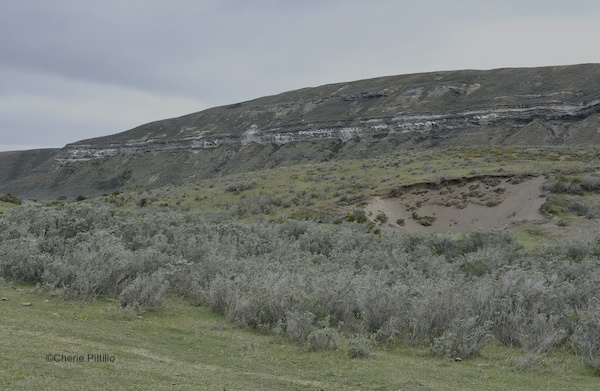
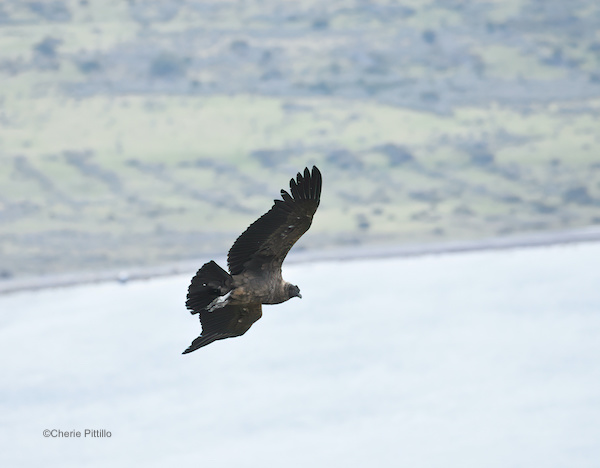
Those brown feathers easily identify it as an immature which won’t attain full adult plumage until eight years of age. Both adult sexes have black feathers, white wing patches, and a sporty white neck ruff which the immature lacks. Unlike our well-known Black or Turkey Vultures in the US, and the Greater and Lesser Yellow-headed Vulture in Central and South America, the Andean Condor exhibits sexual dimorphism. Simply put, males do not look like females.
A male Andean Condor at hatching has a small comb on its head that continues to grow and also neck wattles. Each comb is unique and can be used to identify specific males. Wattle color changes to yellow during aggression or food interactions so perhaps one can identify “wattle” their mood will be. On the other hand, the female lacks the comb and a so-called wrinkled turkey neck!
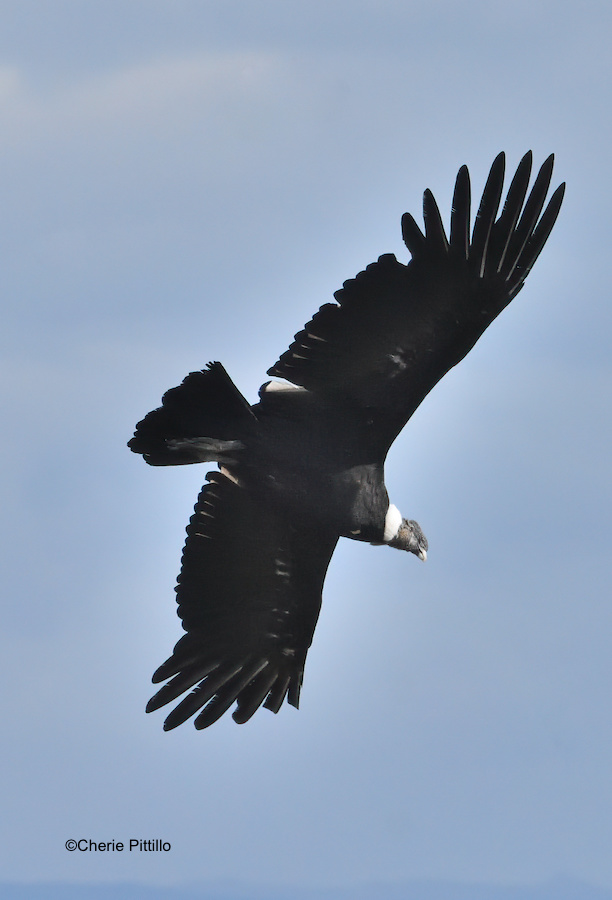

Within the roost are natural ledges and small caves where the condors can roost but also raise young. I would rename it a “condorminium.” One egg is laid which takes 59-60 days to hatch ( captivity records). Both parents incubate and bring food which they carry in their crop or food storage tract as they cannot carry food with their non-lethal talons. Notice the exposed crop in the male condor chest. (We often see exposed crops of the Crested Caracara in the US and in the Yucatan.
Also, I would be remiss if I didn’t mention how incredible to watch these giants soar with little effort. Meanwhile I stood on a 10X20 foot rocky ledge above the roost trying to photograph them in 20-30 mile an hour winds! Exhilarating and frightening at the same time!)



At six months the slow growing chick can fly with what appears to be heaps of encouragement from the parents to do so. However, parents keep feeding the fledgling for several months. Therefore parents may not breed again for 18 months or more. If feeding conditions are poor, they won’t breed at all.
This large scavenger searches for carcasses of medium to large mammals like guanacos, domestic livestock, or stranded whales, seals/sea lions, and seabirds. Condors can leave the Andes to fly along the coast to search for stranded whales, sea lions/seals, and seabirds. They will feed on placentas at large seal colonies. Also they will leave to soar over open grassland especially during lambing season in search of dead lambs.
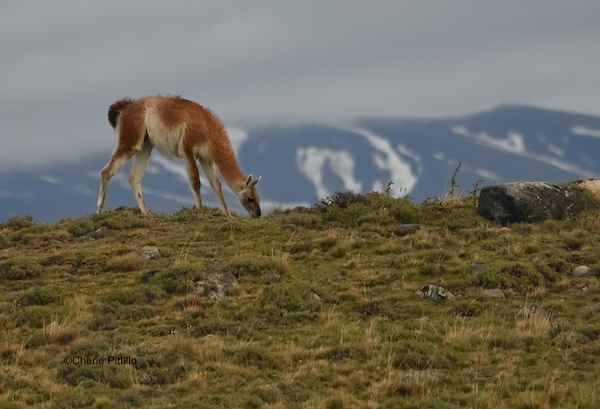
One study indicated that Andean Condors can impact how much time a puma spends feeding on a carcass. They may congregate at a kill to harass the puma. Scientists speculated pumas had to increase their kill rate by 50% compared to the kill rate of their mountain lion first cousins in North America.

As one of the largest and heaviest birds of prey in the world, the Andean Condor is the national bird for several South American countries of Bolivia, Colombia, Ecuador, and Chile. Those countries give a hint to the distribution of this vulture along with the name, Andean, as it is an icon of the Andes mountains. Or was. The former range was the length of the Andes from Venezuela south to the tip of South America. Now it is rare north of Peru but reintroduction programs continue to release new birds as it is often poisoned over most of it range due to alleged attacks to livestock.
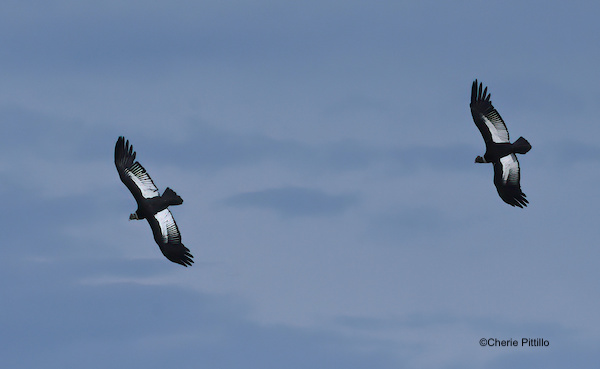

By the way condors and vultures in the Americas are in the same family and not to be confused or related to vultures in other parts of the world. Also they used to be associated with the classification of hawks and falcons and later with storks and then with hawks but not falcons and now comes a suggestion to place it in an order with ospreys and Secretary Birds. Even with genetic analyses, everything is not easily categorized.
Just like its taxonomy is confusing so are widespread descriptions as the largest flying bird in the world or largest wingspan in the world or largest flying bird in the Americas. These comments don’t take into account the wingspan of albatrosses or the weights of trumpeter swans or Dalmation Pelicans, etc. Just remark it is ONE of the heaviest flying birds in the Americas with one of the longest wingspans. And enjoy this two foot feather that I photographed and returned to the Patagonian ground.
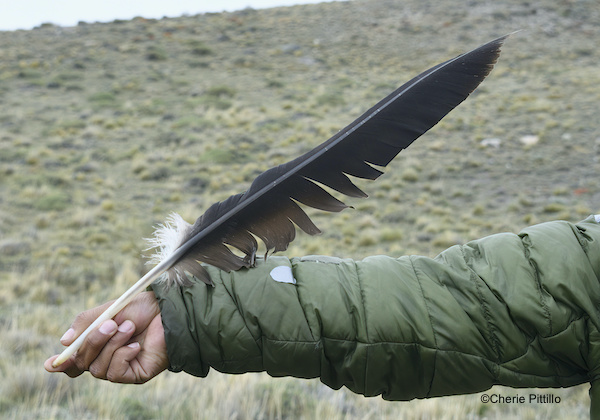
SOAR WITH NATURE!
DISCLAIMER: References do not agree. Plus I may not have found the latest research in my efforts.
Birds of Chile A Photo Guide, Birds of Chile Princeton Field Guide, A Wildlife Guide to Chile
https://birdsoftheworld.org/bow/species/andcon1/cur/introduction
https://journals.plos.org/plosone/article?id=10.1371/journal.pone.0053595
https://www.peregrinefund.org/explore-raptors-species/vultures/andean-condor
https://lazoo.org/explore-your-zoo/our-animals/birds/condor-andean/
Cherie Pittillo, “nature inspired,” photographer and author, explores nature everywhere she goes. She’s identified 56 bird species in her Merida, Yucatan backyard view. Her monthly column features anecdotes about birding in Merida, Yucatan and also wildlife beyond the Yucatan.
Contact: [email protected] All rights reserved, ©Cherie Pittillo




2 comments
A great article, Cherie – so well written (sans your puns!) and with great information. I want to suggest that you plan a trip to Colombia next February, when I will return for the 10th Cali Bird Fair, so you can report on the colorful and fascinating birds there and all they are doing for conservation.
What a wonderful suggestion, Barbara MacKinnon! Would love to travel with you again. And what? You didn’t like “Condominium” and “wattle” the mood be?
Even James Batt wrote and thanked me!